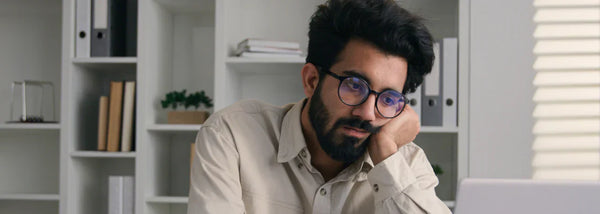7 Simple Ways to Lower A1C Naturally and Improve Insulin Sensitivity
Key Takeaways:
Key Points:
- Measuring A1C is a practical way to understand your metabolic health and your risk for diabetes. A high A1C percentage indicates long-term blood sugar levels outside of the “normal” range.
- Type 2 diabetes, prediabetes, and insulin resistance can all be reversed. However, this requires intentional lifestyle changes (including diet, exercise, and supplements).
- Our favorite supplements for lowering A1C include butyrate, Ceylon cinnamon, and white mulberry leaf. Butyrate and Ceylon cinnamon help lower blood sugar levels long-term, while mulberry leaf extract provides a temporary shield against glucose spikes (up to forty percent!).
About ten percent of the global population struggles with diabetes.
Most of those cases (about ninety-eight percent) are type 2 diabetes — which can be prevented and even reversed with the right resources.
The problem is that most people don’t know what those resources are.
Sure, diet and exercise play a huge role in controlling blood sugar regulation. But they’re only one piece of a much more complicated puzzle.
We need to understand why the cells have become desensitized to insulin.
And we need to give the body tools to heal — rather than just medicate the symptoms.
If you’re struggling with high A1C, you’ve likely been diagnosed with diabetes, prediabetes, insulin resistance, or metabolic syndrome.
Let’s explore some natural ways to lower A1C levels and get you back to feeling normal — without the use of pharmaceutical drugs.
Table of Contents:
What Is Your A1C, and How Does It Measure Metabolic Health?
Measuring A1C is standard practice for blood glucose monitoring. Essentially, A1C tests measure the hemoglobin-to-glucose ratio in your bloodstream, evaluating your risk for diabetes. (You want that ratio to be lower rather than higher).
What’s helpful about A1C is that it tests more than just current blood sugar levels — it looks at your metabolic and glucose health over a three-month period.
Here’s what your A1C results mean:
|
A1C Percentage |
Indication |
What to Know |
|
5 percent or below |
Normal |
Higher numbers in this range could indicate insulin resistance. If you experience regular blood sugar crashes and hormone imbalances, it may be helpful to check with your doctor. |
|
5.7 to 6.4 percent |
Prediabetes |
The optimal time to intervene before a diabetes diagnosis. |
|
6.5 percent or higher |
Diabetes |
Diabetes can be managed (or even reversed) with intentional lifestyle changes. |
A1C monitoring isn’t the only way to track your body’s response to glucose, but it is a powerful tool to help us understand conditions like…
- Insulin resistance
- Prediabetes
- Type 2 diabetes
- Metabolic syndrome
- Overall cellular health
Let’s explore some ways you can lower A1C naturally.
7 Simple Ways to Lower A1C Naturally (Without Medication)
Learning about your high A1C test results may be alarming. But managing blood sugar levels and sticking to a healthy diet is easier than ever before. You just need the right tools (diet, lifestyle, and supplements) to manage glucose and even reverse your diagnosis.
1. Vinegar Before Meals
If you’re planning to eat starch and grain-based carbohydrates in your meal, there are a few things you can do to curb a glucose spike and make your cells more sensitive to incoming insulin. One recommendation is to consume vinegar before meals.
In some cultures, this is a common practice. Salads are dressed with a mix of vinegar and healthy oil, while vegetables are pickled using vinegar for preservation. If neither of these options is appealing, you can drink white or apple cider vinegar mixed with water. (About 2-6 tablespoons daily are recommended, but you can start with 1-2 tablespoons and see if you notice any effect).
2. Take Regular Walks to Metabolize Insulin
High levels of insulin are easier for the cells to use when your body is active. Using your muscles for an afternoon walk or weightlifting at the gym are powerful ways to reduce A1C and lower the risk of long-term symptoms associated with diabetes.
When it comes to controlling blood sugar regulation, there’s no “best” exercise. A simple walk, yoga session, or outdoor sport is the perfect place to start. Choose a method of exercise that’s easy for you to begin and maintain.
3. Use Low Glycemic Flour
Typically, a low-carbohydrate diet (cutting out sugar and flour) is recommended for someone with a high A1C. But fear not, bakers — there are healthier types of flour that may be substituted for better overall health.
Freshly milled, complex whole grains contain much more protein and fiber than grocery store blends. Grains like buckwheat, farro, spelt, kamut (or Khorasan), and einkorn may help to increase your nutrient intake while lowering your risk of diabetes.
In one study, kamut flour was shown to decrease the risk of type 2 diabetes due to its omega-3 fatty acid content and high fiber (which resulted in better microbiome composition for study participants).
4. Fermented Foods
One of the reasons we’re so passionate about maintaining a healthy microbiome is that gut flora has shown a direct impact on metabolic health and blood sugar regulation.
One study looked at the unique microbiome of patients with diabetes. The researchers found that diabetes patients had altered short-chain fatty acids, changed bile acid metabolism, and differences in bacterial composition (when compared to healthy patients).
Fermented foods (alongside prebiotics, postbiotics, and lifestyle changes) may help to reduce blood sugar spikes and lower your overall A1C. In addition to their impact on metabolic health, fermented foods have also been shown to have other benefits, such as anti-inflammation, antioxidant properties, improved cognitive function, and better gastrointestinal health.
Foods like yogurt, sauerkraut, and kimchi are great examples of fermented foods.
5. Butyrate
Right now, the “holy grail” of weight loss solutions and blood sugar balance is Ozempic. It’s part of a class of medications called GLP-1 agonists, which mimic the hormone GLP-1 (glucagon-like peptide-1) and indicate a feeling of fullness. Basically, GLP-1 keeps us from overeating and introducing too much glucose into the bloodstream.
Ozempic is a temporary solution, though, and it doesn’t get to the root of blood sugar issues.
But butyrate does.
Butyrate is a short-chain fatty acid naturally produced in the gut by the microbiome. Its job is to help regulate appetite, reduce cravings, and improve blood sugar balance — all through natural GLP-1 production (not the synthetic stuff).
Butyrate is a more sustainable remedy for blood sugar balancing since it targets root cause issues (like the microbiome and glucose sensitivity in the cells).
Over time, it helps our bodies create GLP-1 naturally, without any pharmaceuticals.
6. Ceylon Cinnamon
Cinnamon (specifically, Ceylon cinnamon) is notable in studies for improving insulin sensitivity in the cells. It allows the cells to better absorb glucose, keeping it out of the bloodstream.
In one study, the polyphenols and antioxidants found in cinnamon were associated with a lower inflammatory response, better cholesterol levels, and fewer blood sugar spikes overall. About 500 mg of high-quality cinnamon daily is recommended to slow the progression of type 2 diabetes — along with dietary and lifestyle changes.
7. White Mulberry Leaf
White mulberry leaf is a novel agent known as an alpha-glucosidase inhibitor. Which is a fancy way of saying it blocks up to forty percent of the glucose from entering the bloodstream (post-meal). Since a fraction of glucose doesn’t reach your bloodstream, it gives both your pancreas and cells a break from the glucose overload — good news for those with insulin resistance.
White mulberry leaf won’t reverse insulin resistance entirely, but it can manage it — lowering glucose spikes while you make key diet, lifestyle, and supplement changes.
Another benefit of white mulberry leaf is that it’s well tolerated by the gut. Other supplements with similar effects (berberine, for example) are more likely to upset the stomach or even promote hypoglycemia (too low blood sugar).
For optimal blood sugar support, we recommend taking white mulberry leaf extract before a meal, especially before eating carbohydrates. You can also drink it as a tea, hot or cold.
Yes, It’s Possible to Lower A1C Naturally and Feel Like Yourself Again
What’s better than a “miracle cure” like Ozempic?
Watching your body heal itself.
These supportive supplements and lifestyle changes are meant to help your body return to homeostasis — so you no longer have to rely on medication.
Butyrate is our go-to supplement for blood sugar regulation and lowering A1C.
It’s not Ozempic. It’s something better. (And just about side-effect free).
Butyrate helps your body produce its own GLP-1, curbing appetite, signaling fullness, and balancing both the microbiome and blood sugar.
It’s a better way to return to effortless, healthy blood sugar levels and better A1C.
Ready to Try It For Yourself? Watch Butyrate Transform Your A1C
Buffey AJ, Herring MP, Langley CK, Donnelly AE, Carson BP. The acute effects of interrupting prolonged sitting time in adults with standing and light-intensity walking on biomarkers of cardiometabolic health in adults: a systematic review and meta-analysis. Sports Med. 2022;52(8):1765-1787. https://doi.org/10.1007/s40279-022-01649-4
Lown, M., Fuller, R., Lightowler, H., Fraser, A., Gallagher, A., Stuart, B., Byrne, C., & Lewith, G. (2017). Mulberry-extract improves glucose tolerance and decreases insulin concentrations in normoglycaemic adults: Results of a randomised double-blind placebo-controlled study. PloS one, 12(2), e0172239. https://doi.org/10.1371/journal.pone.0172239
Mayorga-Ramos A, Barba-Ostria C, Simancas-Racines D, Guamán LP. Protective role of butyrate in obesity and diabetes: New insights. Front Nutr. 2022;9:1067647. https://doi.org/10.3389/fnut.2022.1067647
Sadagopan, A., Mahmoud, A., Begg, M., Tarhuni, M., Fotso, M., Gonzalez, N. A., Sanivarapu, R. R., Osman, U., Latha Kumar, A., & Mohammed, L. (2023). Understanding the Role of the Gut Microbiome in Diabetes and Therapeutics Targeting Leaky Gut: A Systematic Review. Cureus, 15(7), e41559. https://doi.org/10.7759/cureus.41559










